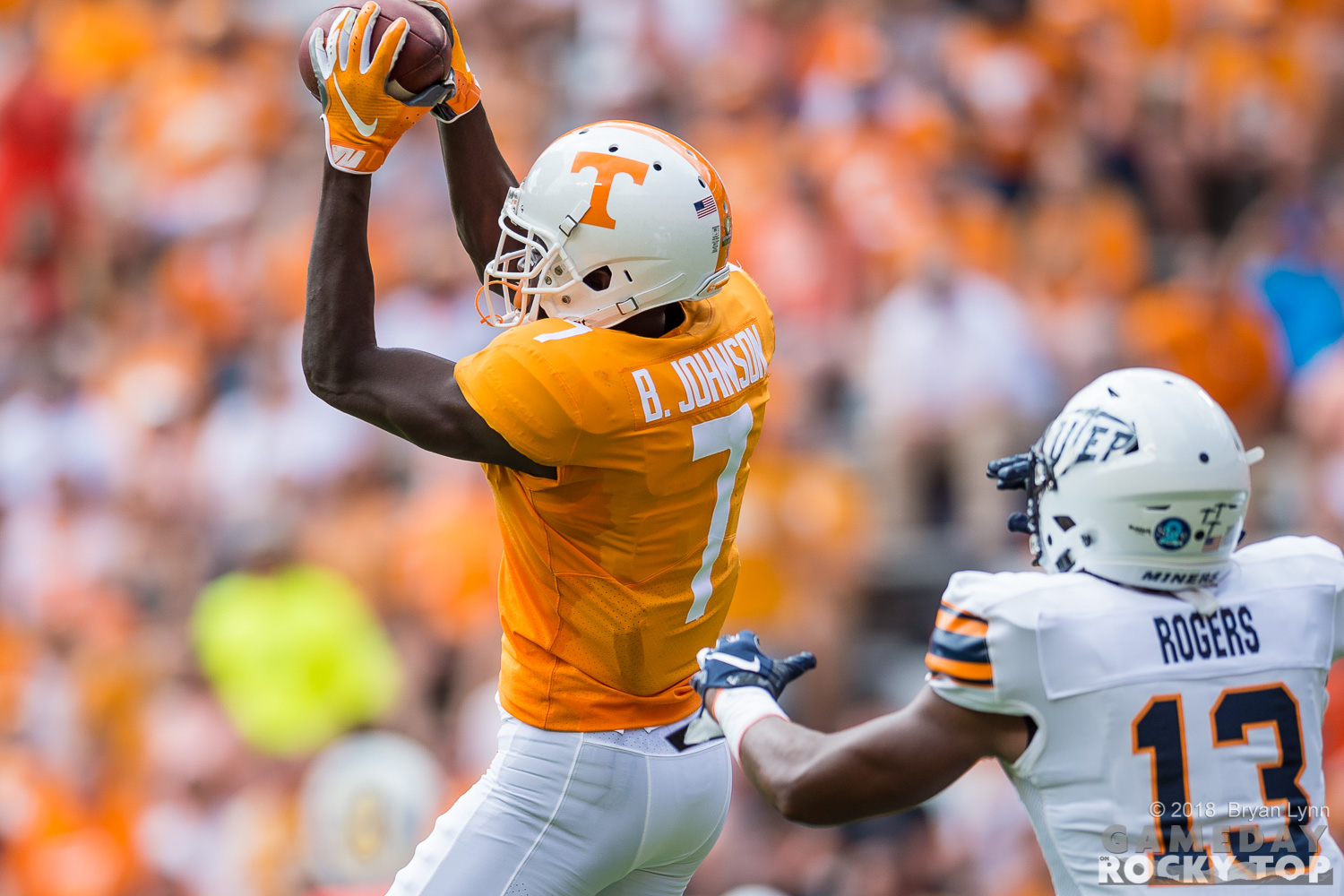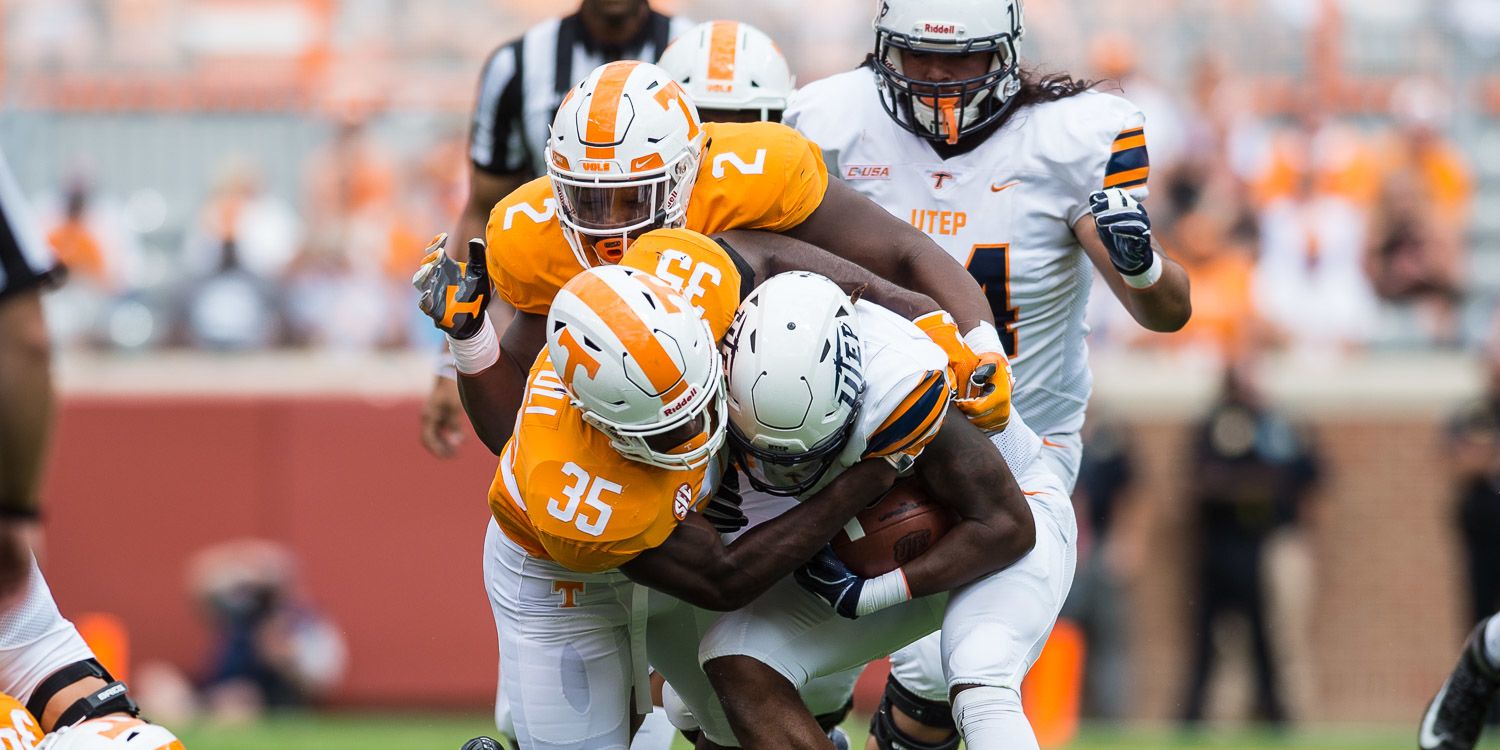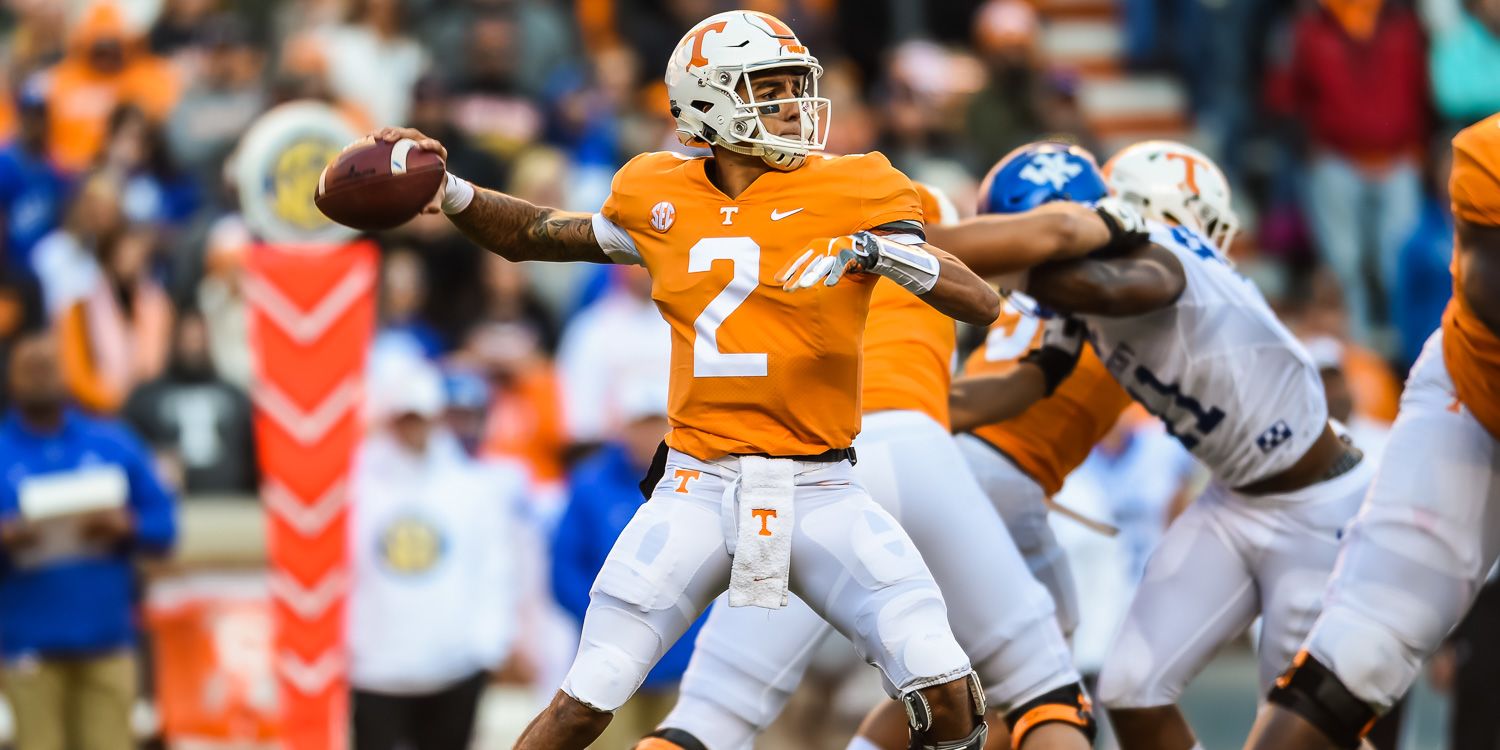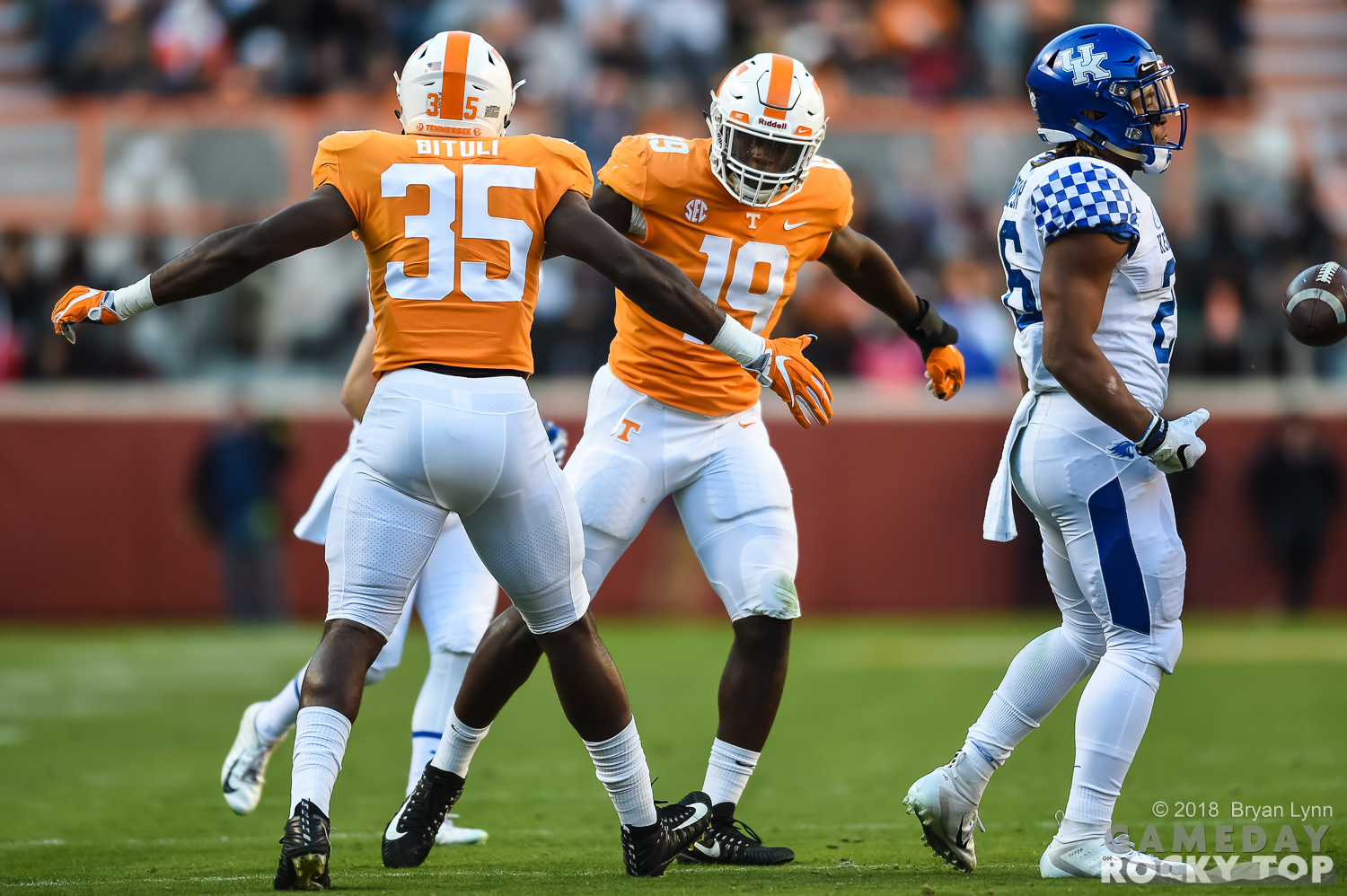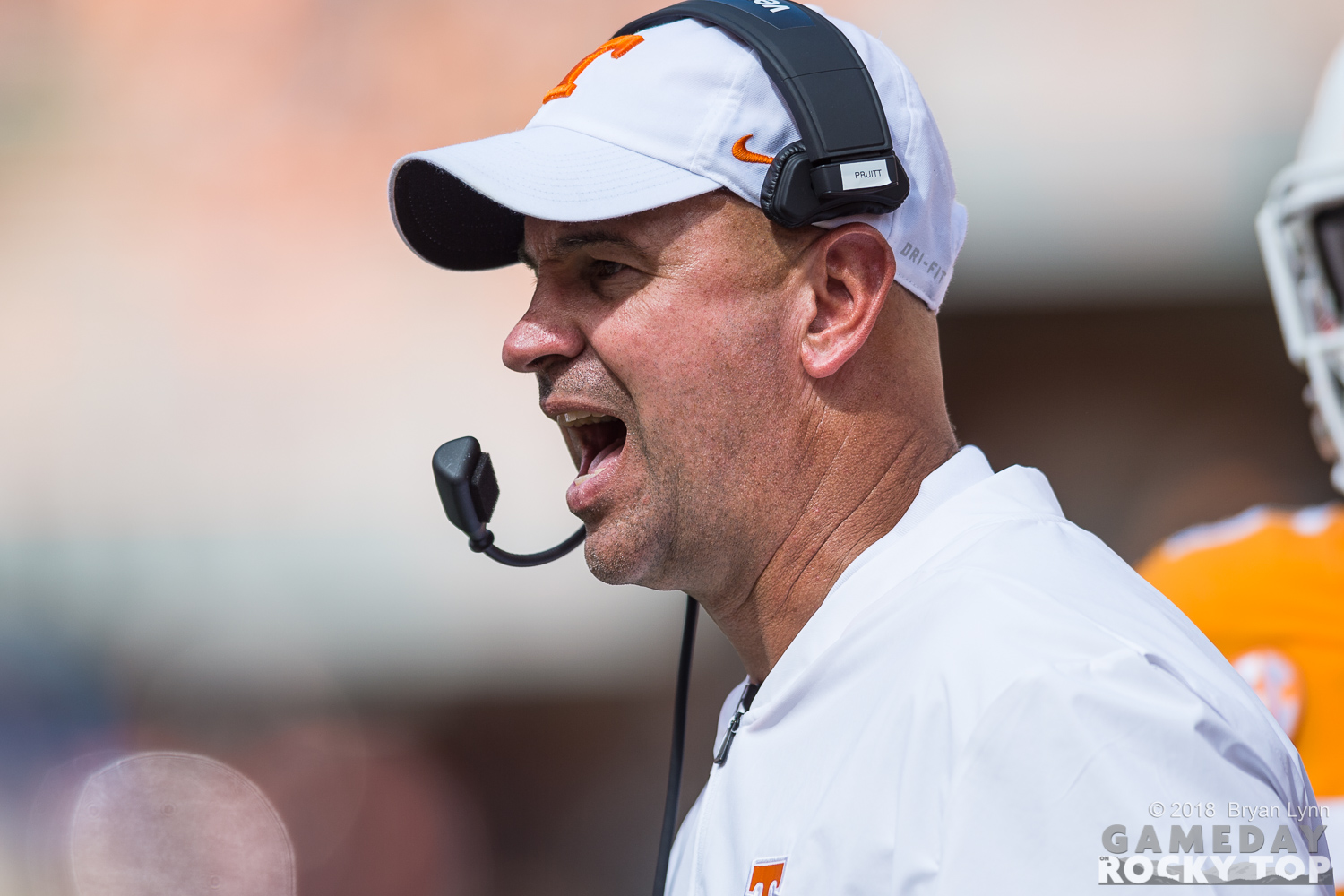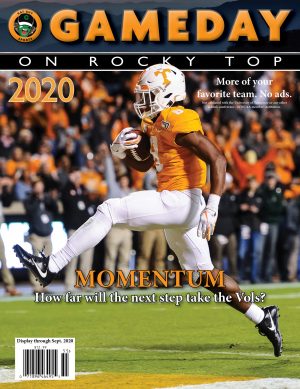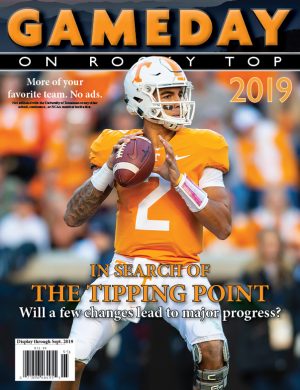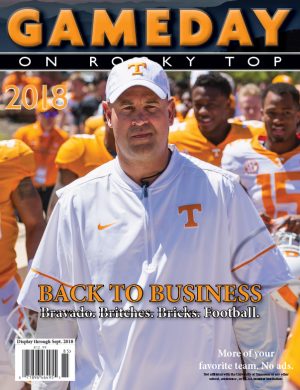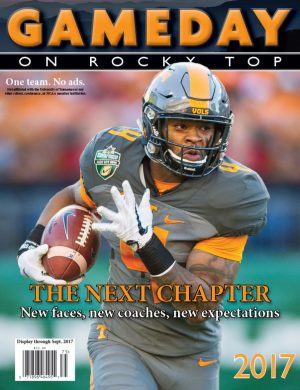With four senior Wide Receivers at or near the top of Tennessee’s 2019 depth chart and little in the way of proven depth behind them, recruiting at the position for the 2020 class is of the utmost urgency. Looking out to 2020, the Vols currently project to have only seven WRs on the roster (eight if you count Deangelo Gibbs, who from this vantage point seems best suited at the STAR position on defense due to his prior experience there and the greater chance he can have a large impact). Of those 7-8, only Josh Palmer has proven himself to be a consistent SEC producer, and three of them are redshirt or true freshmen. Further, if Tennessee wants to take the next step towards truly contending for SEC championships than it can’t just be about quantity (which is a clear need in an of itself) but also quality – the Vols need gamebreakers, plural, at the position, and they need them now.
The good news for Tennessee is that its new position coach, Tee Martin, is an elite recruiter with deep ties to the South, and hoping to have kind of impact we forecasted back when he was hired. Martin has been consistently mentioned with elite WR prospects since his hiring – especially in Alabama and Georgia as ten of the twelve prospects discussed below hail from one of those two states – and has the Vols in the mix with multiple high level WRs. However, after having missed on a couple of high level targets (more below) it’s imperative that the Vols close the deal on a few of them instead of coming in second.
Tennessee does already has a commitment from 3-star Jimmy Calloway who picked the Vols over Oregon and others – he’s most recently been offered by South Carolina in mid-May. Calloway is an explosive athlete and track star who can play on either side of the ball and is very comfortable with the ball in his hands. He’s shined at a couple of spring 7-on-7 events showing off great route running and dynamic playmaking ability and seems destined for more high-level offers. He’s also got some high-end CB attributes and could end up getting a look there in college as well. The bet here is that Tennessee will look smart having snagged Calloway’s early commitment but will end up having to fight off numerous other power programs.
4-star Zevian Capers, who is technically committed to Arkansas but taking visits, visited Tennessee in early April and has the Vols high on his list. The large-framed but speedy pass-catcher took an official visit to South Carolina in late April and Tennessee hopes to get him back on campus again soon. Capers showed out at the Atlanta Opening event, measuring in at 6’4 and close to 200 lbs while showing off great route running, speed, change of direction and sure hands. Along with the Razorbacks and Gamecocks, he also has offers from Florida and actually received a Clemson offer last March as well. While the Vols need at least 4 WRs in this class, Capers would make a great pairing with Calloway in terms of size and positional combinations.
After two visits in a month, Tennessee is the stated leader for 4-star Kris Abrams-Draine, a 4-star former LSU commitment. From South Alabama like Martin , he’s a smaller WR at 6’0 and around 170 pounds, but with offers from Oregon, Florida, and LSU among others, has the perfect size/quickness combination for the slot. Having already been committed before it wouldn’t be a surprise to see “KAD” take his time before committing again, but as of now the Vols have placed themselves in a very strong position.
4-star EJ Williams took his official visit to Knoxville for the Orange & White Game after visiting previously in March and has the Vols in an unofficial top 6 along with Florida, Florida State, Alabama, Auburn, and Clemson. Things have been relatively quiet for the Alabama native, which might not be a great sign for Tennessee considering he’s used that official visit already. His only other OV is set for instate Auburn in late June, and took an unofficial visit to Gainesville last weekend. Hailing from the same high school as Clemson freshman sensation Justyn Ross, Williams has the Tigers and Alabama on top at the moment. Clearly this is going to be a tough battle for Tee Martin and the Vols but if the recruitment extends further into the season Tennessee certainly has enough traction to stay in the mix for his planned August 24th announcement.
Former LSU commitment and Memphis native Darrin Turner is another target on the radar, although despite his 4-star ranking he seems like a player the Vols would like to see in camp. His physical profile compares to 2019 Arkansas signee Trey Knox, a similarly big-bodied instate player who the Vols ultimately passed on. If Turner a) gets to campus and b) shows not just overall ability but high-end speed, the Vols could absolutely turn up the heat on him.
The Vols are also very much in the mix for 4-stars Mushin Muhammad (who visited in early April but has since visited Texas A&M twice) and are still working on 4-star Alabama commitment Dazalin Worsham who’s been on campus three times himself, including as recently as March. 4-star Auburn commitment Kobe Hudson decided to visit Knoxville for Tennessee’s spring game over the Tigers, suggesting that the door is at least cracked for the Vols. Tennessee also offered 4-star Joshua Downs, a UNC commitment who is 7-on-7 teammates with Harrison Bailey and hails from the same Atlanta-area high school as 2019 Vol signee Warren Burrell. Then there is Memphis native and former Oklahoma signee Kundarrius Taylor, Junior College teammate of Vol commit Jordan Davis who Tennessee has offered. 4-star do-it-all athlete Demarcus Beckwith (cousin of Lamonte Turner) also has the Vols high on his list after visiting in March. Finally, Georgia natives Robert Lewis and Kobe Hudson (teammate of Harrison Bailey) have Vol offers and have both been to campus.
The Vols appeared to be in very strong shape with 5-star DC-native Rakim Jarrett, who took two unofficial visits to campus in March. However, he committed to LSU while on an OV in Baton Rouge in late April. Jarrett profiles as an instant 2020 starter in the mold of recent Alabama and Clemson WRs and would be one of the jewels of this class, so expect the Vol staff to continue to work to get him back for an official visit at some point before signing day. Similarly, the Vols were right there for Thaiu Jones-Bell (who visited for the Orange & White Game) but he recently committed to Alabama.
The board will shake itself out as the above targets will (hopefully) make their way back to Knoxville and additional offers could emerge from camp performances. Tennessee has done a nice job getting involved with multiple WRs the caliber of which it needs to take the next step offensively – and frankly most if not all of the existing WRs on the board have better recruiting pedigrees than all of the signees in the last two classes except Ramel Keyton – but as stated above the next and most important step is landing them.
